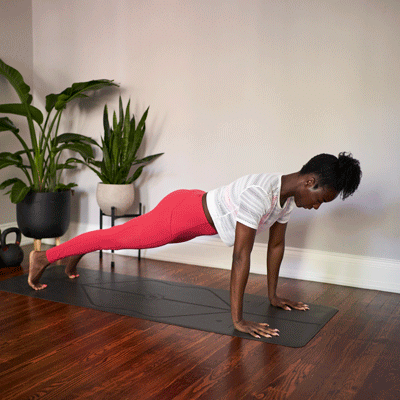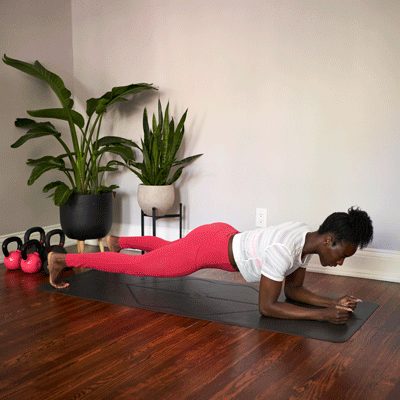How to Build Muscle at Home for Skinny Guys
Are you tired of being labeled as "too skinny" or feeling self-conscious about your frame? Do you want to build muscle without stepping into a crowded gym? You're not alone, and the good news is that you can achieve your muscle-building goals without ever leaving your home.
In a world where gym memberships can cost a fortune and not everyone has the time or comfort to hit the fitness center, home workouts have become a popular and efficient way to transform one’s physique.
For those on the leaner side, gaining muscle seems an uphill battle, often laden with myths and misconceptions about diet and exercise.
Building muscle doesn't require expensive equipment or a personal trainer. With the right mindset, consistency, and a tailored approach, you can effectively sculpt your body from the comfort of your own home.
This article will guide you through practical strategies and exercises specifically designed for skinny guys to build muscle mass home efficiently. Say goodbye to the frustration and hello to a new, stronger you!
How to Gain Muscle When You're Skinny
This means you must be strategic with your caloric intake and exercise regimen. To effectively build muscle, you need to consume more calories than your body burns, focusing on a diet rich in protein, healthy fats, and complex carbohydrates.
Additionally, you must engage in a strength-training program tailored to your needs, emphasizing exercises that target major muscle groups and gradually increasing resistance to stimulate muscle growth. Adequate rest and recovery time are equally important to allow your muscles to repair and grow. By thoughtfully balancing nutrition, exercise, and recovery, it is entirely possible to achieve a muscular physique, even with a fast metabolism.
Steps to Gain Muscle When You're Skinny
Are you ready to transform from skinny to muscular but aren't sure where to start? Gaining muscle when you're naturally lean can seem challenging, but with the right approach and mindset, it's absolutely achievable. Below are the steps to help you bulk up and build muscle effectively.
How to Gain Muscle When You're Skinny
Having a fast metabolism can indeed be both a blessing and a curse. On the one hand, it makes it easier to maintain a lean physique without stringent dietary restrictions, which many find advantageous.
However, the challenge arises when trying to build muscle, as a fast metabolism can lead to burning calories at a rate that makes muscle gain more difficult.
To overcome this obstacle, it's crucial to adopt a tailored approach involving a diet that provides sufficient calories and protein to support muscle growth while engaging in strength training exercises designed to maximize muscle hypertrophy.
Consistent weight training combined with strategic nutritional planning, including eating more frequent, nutrient-rich meals, can help you achieve the desired muscle mass gains without compromising your lean physique. With determination, patience, and the right strategy, turning the curse of a fast metabolism into a blessing is entirely achievable.
Steps to Gain Muscle When You're Skinny
Are you ready to transform from skinny to muscular but aren't sure where to start? Gaining muscle when you're naturally lean can seem challenging, but with the right approach and mindset, it's absolutely achievable. Below are the steps to help you bulk up and build muscle effectively.
Eat a diet that's high in carbohydrates.
Carbohydrates are crucial for providing the body with the energy needed for physical activity and daily functioning. They are broken down into glucose and stored in the muscles and liver as glycogen, which serves as the primary energy source during exercise.
It is recommended that 50-60% of one's daily caloric intake comes from carbohydrates to ensure sufficient energy supply. However, it is important to focus on consuming high-quality carbohydrates rich in fiber and nutrients for optimal health benefits.
Whole grains like oats, brown rice, and quinoa are excellent choices, as they release energy slowly and sustain you for longer durations.
Incorporating starchy vegetables such as sweet potatoes and regular potatoes, along with fruits like bananas, mangoes, avocados, and peaches, can also enhance the quality of your carbohydrate intake.
Vegetables such as Brussels sprouts, carrots, broccoli, and cauliflower further contribute to a balanced and nutrient-rich diet, supporting overall well-being and effective workout fuel.
Eat protein every 3 to 4 hours.
To give your body longer-lasting energy and maintain a healthy weight, incorporating nutritious protein sources into your diet is essential. Proteins help in sustaining energy levels and are an excellent source of calories, preventing unintended weight loss.
Aim to consume about 25% of your daily calorie intake from protein. You can include a variety of protein-rich foods such as lean meats, tofu, nuts, and beans in your meals to achieve this balance.
Additionally, protein shakes offer a convenient way to boost your calorie intake throughout the day. Consider having a protein shake an hour before a workout to fuel your exercise or drinking one before bed to steadily supply your body with nutrients as you rest.
Include healthy fats in your meals.
Incorporating monosaturated fats into your diet is crucial for hormone production and muscle building. These heart-healthy fats, found in foods like olive oil, canola oil, avocados, salmon, sardines, and trout, are essential as they not only support muscle growth but also contribute to overall cardiovascular health.
Striving to make these fats comprise 20 to 35% of your daily caloric intake can greatly aid in balancing your nutrient requirements.
It is equally important to avoid unhealthy fats, commonly present in fast foods and packaged snacks, which are laden with saturated and trans fats, as they can undermine your health goals by promoting cholesterol build-up and increasing the risk of heart disease.
By focusing on monosaturated fats, you can enhance your diet's nutritional profile and support your body's muscle-building processes.
Add calories to your diet to build muscle.
Consuming an extra 500 calories daily is a crucial step in supporting muscle growth, especially if you're increasing your workout intensity and frequency. When you're building muscle, your body demands more energy, and without sufficient caloric intake, there’s a risk of losing weight instead of gaining muscle mass.
It's important to target wholesome and nutrient-dense foods rather than turning to high-calorie snacks or processed convenience foods. Incorporating items like nuts, protein shakes, smoothies, or hardboiled eggs with crackers into your daily meal plan can help you meet this additional caloric requirement.
By spreading these extra calories across your meals and snacks throughout the day, you can effectively support your body's needs for muscle repair and growth.
Snack 1 to 4 hours before you work out
Fueling your body properly before a workout is crucial to maintaining energy levels and optimizing performance. Consuming a combination of fast-digesting carbohydrates and protein can provide the necessary energy boost without causing fatigue early into your exercise session.
Options like a piece of toast with nut butter and jam or a mix of grapes and nuts ensure that your body has a steady supply of fuel.
Additionally, staying hydrated with water or a sports drink enhances endurance and helps prevent dehydration, which can negatively impact your workout. If your exercise routine exceeds one hour, consider a small, additional snack to sustain energy, such as a rice cake topped with a hardboiled egg or a piece of cheese paired with berries.
These choices help keep your energy levels stable and support your overall performance.
Eat a post-workout meal 30 to 60 minutes after you're done.
Refueling your body after exercise is crucial, especially if you're on the skinnier side and aiming to build muscle mass. After a workout, your muscles are more receptive to nutrients, so it's essential to consume a meal that is high in carbohydrates and includes some protein to aid muscle repair and replenish energy stores.
A ratio of 3 to 4 parts carbohydrates to 1 part protein is ideal for this purpose. This combination helps to rapidly restore glycogen levels and supports muscle recovery and growth.
Create a weight-training schedule.
For an effective weight-training regimen aimed at bulking up and toning muscles, it's crucial to lift weights about four days a week, focusing on high-resistance with lower repetitions. A strategic schedule can help keep your workouts interesting and comprehensive.
Day 1 might involve targeting the chest and triceps with exercises such as dips, overhead extensions, and incline dumbbell presses.
Day 2 could concentrate on the back and biceps through activities like seated barbell curls and wide-grip pull-ups.
Day 3, shift focus to the legs and shoulders with workouts including leg presses, leg curls, and deadlifts.
Day 4 for rest to facilitate muscle recovery, which is essential for growth.
Day 5 should be reserved for a total body workout, ensuring that all major muscle groups are activated.
This approach not only helps avoid workout monotony but also ensures balanced muscle development and adequate recovery time, which are keys to achieving your fitness goals.
For example, a warming bowl of hot amaranth cereal topped with dried fruit and nuts or chia seeds not only provides the necessary carbohydrates and protein but also offers a tasty and nutritious way to nourish your body post-exercise.
Schedule time to rest.
Taking regular breaks and ensuring adequate rest is crucial for effective muscle recovery and overall well-being.
Engaging in intense workouts, such as exercising from Monday through Wednesday, requires the body to recuperate, which is why taking a day off on Thursday is beneficial.
This rest period allows muscles to repair and grow stronger, enhancing performance in future workouts. Incorporating slower cardio over the weekends can maintain fitness levels without overstraining the muscles.
Adequate sleep is equally important, with at least 8 hours per night recommended, as this is when the body releases growth hormones crucial for muscle recovery and growth.
Addressing post-workout fatigue with naps and deep-tissue massages can further assist in easing muscle tension and promoting relaxation.
Prioritizing rest and recovery ensures the body remains in peak condition and avoids the adverse effects of overtraining.
Limit cardio activities to 3 or 4 times a week.
The advice to stick to 30-minute aerobic workouts and avoid excessive calorie burning aims to help individuals who are looking to build muscle without losing too much weight.
High-intensity aerobic activities like running can lead to significant calorie expenditure, which might hinder muscle growth if not properly managed with increased caloric intake and sufficient protein.
Therefore, engaging in low-intensity aerobic exercises, such as walking up and down hills, using a stair-climber machine, cycling in a higher gear, or walking on a treadmill, only a few times a week can help maintain cardiovascular health without the risk of excessive weight loss.
Additionally, combining these moderate workouts with strength training schedules ensures a balanced approach, promoting muscle growth while keeping the heart healthy. This plan allows for efficient energy use, supports muscle-building goals, and maintains overall fitness.
Home workouts How to build muscle for Skinny Guys
Creating a balanced workout routine involves incorporating both cardio and strength training to ensure comprehensive fitness and muscle development. Strength training can begin with simple hand weights or even just using your own body weight, allowing for a solid foundation as you start out.
As your muscle strength increases, incorporating heavier weights can further enhance muscle growth and endurance. Cardio, often considered a challenging yet crucial part of fitness, should not be neglected as it supports cardiovascular health and is beneficial for weight management.
High-intensity interval training (HIIT) is particularly effective for maintaining muscle while maximizing cardiovascular benefits when performed a few times weekly.
Research suggests that strength training at least twice a week is ideal for muscle growth, making it practical to start with two to three days of strength training and two days dedicated to cardio.
It's vital to schedule at least two days for rest to promote recovery and prevent burnout. As you advance, consider adding a fourth day of strength workouts, possibly dividing routines into upper and lower body focus to target muscle groups more specifically.
This approach not only facilitates continual muscle development but also helps maintain motivation and reduces the risk of injury by providing variety and allowing adequate rest.
How to Do Chest Workout At Home
Image by Dima Bazak
- To perform a proper push-up, start by lying face down on the floor.
- Position your hands flat on the ground so they are slightly wider than shoulder-width apart.
- Engage your core and keep your body in a straight line from head to heels.
- Push through your hands to raise your shoulders, torso, and legs off the ground, extending your arms completely so that only your hands and toes are in contact with the floor, forming a plank position.
- As you lower your body, focus on maintaining a straight alignment, bringing your chest down until it almost touches the floor, then push back up to the starting position.
- Repeat this sequence for the desired number of repetitions, ensuring you maintain good form throughout to maximize the effectiveness of the exercise and minimize the risk of injury.
- To perform this exercise, begin in a solid plank position with your elbows and toes firmly planted on the floor, your core muscles tightly engaged, and your torso elevated in a straight line. From this position, initiate the movement by extending one arm at a time, pushing off the floor to raise yourself into a push-up position with your arms fully extended. Ensure your body remains straight and your hips do not sag or rotate during this transition. Once in the push-up position, reverse the movement by carefully lowering down onto your elbows one arm at a time, returning to the starting plank position. Throughout the exercise, maintain control and stability, focusing on engaging your core and keeping your movements smooth and deliberate to maximize the benefits of this dynamic exercise. Aim for a consistent tempo and repeat the process for the desired number of repetitions or time interval, balancing the effort applied on each side.
How to Do legs Workout At Home
- To perform a proper squat, start by standing with your feet positioned slightly wider than shoulder-width apart to provide a stable base.
- Extend your arms straight out in front of you with your palms facing down to help maintain balance. As you begin the squat movement, inhale deeply and push your hips back slightly while bending your knees.
- It's important to keep your gaze straight ahead, lifting your chin up, and ensuring your shoulders remain upright. Focus on maintaining a straight back throughout the exercise to prevent injury.
- Lower your body as far as you can comfortably go, ideally until your hips are lower than your knees.
- To rise back up, engage your core muscles and drive through your heels, pushing upward with explosive power.
8 Tips To Help You Build Muscle With At-Home Workouts
Building muscle with at-home workouts is entirely achievable with the right approach and dedication.
First, consistency is key; ensure you are working out regularly, following a structured routine that targets all major muscle groups.
Second, focus on progressive overload by gradually increasing the intensity of your workouts—this could mean more repetitions, adding weights like dumbbells or resistance bands, or intensifying your bodyweight exercises.
Third, prioritize compound exercises such as push-ups, squats, and lunges, which engage multiple muscle groups simultaneously, maximizing your workout efficiency.
Fourth, maintain proper form to prevent injuries and ensure the muscles are being worked as intended.
Fifth, nutrition plays a crucial role; ensure you consume enough protein and a balanced diet to support muscle growth and recovery.
Sixth, allow time for recovery by taking rest days and ensuring you get enough sleep.
Seventh, consider tracking your progress to stay motivated and make necessary adjustments to your routine.
Finally, stay patient and committed, as building muscle takes time and persistent effort.
This technique not only enhances strength but also improves form and stability.
How much exercise do you get on an average day?
On an average day, my exercise routine typically includes a combination of activities that help me stay active and maintain overall fitness. I usually start with a brisk 30-minute walk in the morning, which helps energize me for the day ahead.
Throughout the day, I try to incorporate light stretching or short bursts of activity, especially during breaks from work, to keep my body moving and prevent stiffness from prolonged sitting. In the evenings, I dedicate about 20 to 30 minutes to more structured workouts, such as strength training or yoga, which help improve my flexibility, strength, and relaxation.
Overall, I aim to achieve at least 45 to 60 minutes of moderate exercise daily, ensuring a balanced and healthy lifestyle.
Conclusion
Building muscle at home for skinny guys is absolutely achievable with dedication, the right plan, and consistent effort. By focusing on bodyweight exercises, resistance training with affordable equipment like dumbbells and resistance bands, and maintaining a balanced diet rich in protein and calories, individuals can see substantial gains.
It's crucial to progressively challenge your muscles, track your progress, and give yourself adequate rest for muscle recovery and growth.
Remember, patience and perseverance are key; muscle building is a gradual process, and with time, you can see significant transformations right from the comfort of your home.






Comments
Post a Comment